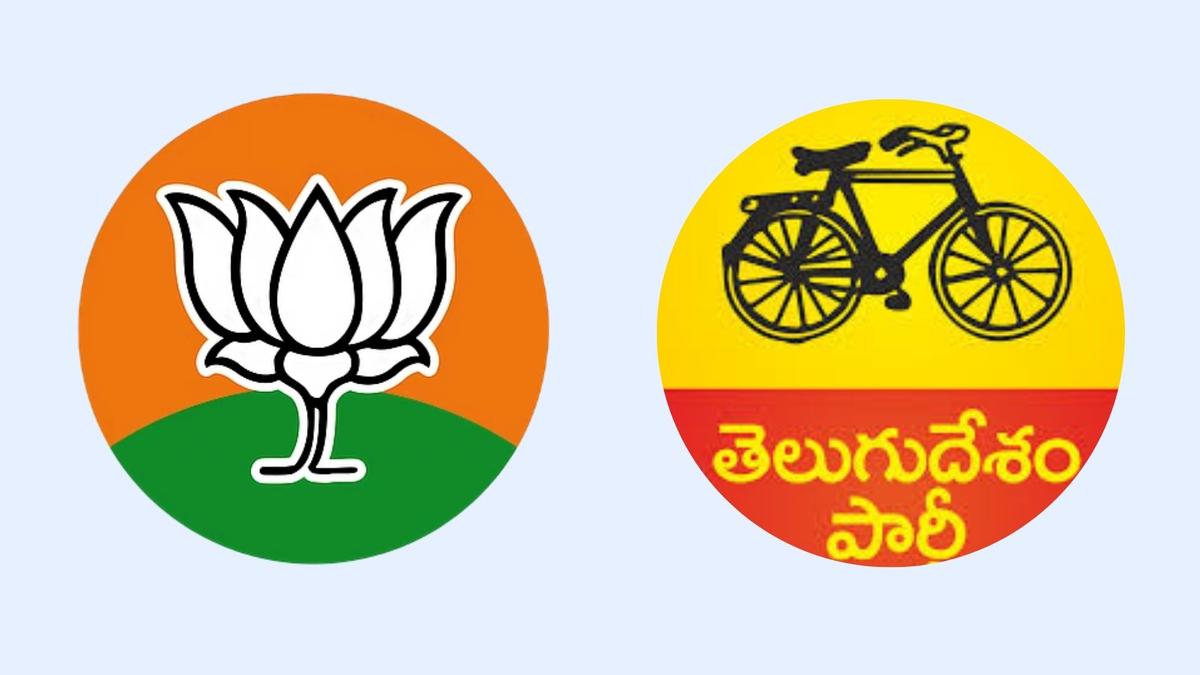The speculation over whether the BJP will support a TDP candidate in the upcoming Jubilee Hills by-poll signals a broader realignment in Telangana’s political landscape.
The 2023 Assembly elections marked a rupture in Telangana’s political trajectory. The decade-long dominance of the BRS, formerly the Telangana Rashtra Samithi, came to an end as the Congress returned to power under Revanth Reddy. While the spotlight has been on the Congress’s resurgence, it is the unfolding re-entry of the TDP and the consolidation of the BJP-TDP-JSP alliance that holds deeper implications for the political landscape. To assess what this reshuffling portends, it is essential to revisit the historical trajectories of vote share transfers, social base shifts, and evolving patterns of caste and party alignment.
The TDP’s renewed interest in Telangana is a strategic return rooted in its historical strength. From 1985 to 1999, it consistently won over 45% of seats in the region, drawing support from Backward Classes (BCs) such as the Yadavs, Gouds, Mudirajs, Munnuru Kapus, and settler Kammas in southern Telangana. Post-2001, due to its ambiguous stance on Statehood, its vote share dropped from 38.46% in 1999 to 15.32% in 2014, and to 0% in 2023 when it did not contest.
Correlation analysis of historical vote shares reveals a strong negative correlation (-0.89) between the TDP and the BRS, suggesting that the BRS’s rise was built substantially on the crumbling edifice of the TDP’s support base. This trend was visible across key districts (Table). In Karimnagar, the TDP’s vote share plummeted from 46.5% (1999) to 0% (2023), while the BRS’s vote share rose from 0% to 37.9% over the same period. In Medak, the TDP’s fall from 47.5% to 0% coincided with the BRS’s rise to 45.3%. In each case, the migration of BC votes and settler votes from the TDP to the BRS was crucial for the latter’s dominance.
However, the electoral tide began to turn after 2018. The BRS, having reached its peak in that election with a vote share of 47.32%, began to lose ground due to governance fatigue, internal fragmentation, and its failed attempt at national expansion. As dissatisfaction grew, especially among aspirational BCs and Dalits, a second wave of vote transfer began, this time from the BRS to the BJP. The BJP’s Statewide vote share increased from 7.10% in 2018 to 13.9% in 2023, marking its best performance in Assembly elections in the State. Its growth was especially sharp in northern Telangana: in Adilabad, the BJP grew from 7.85% to 27.6%; and in Nizamabad, from 6.88% to 26.2%. Some Scheduled Tribe (ST) groups in northern Telangana, such as the Gonds, have also extended support to the BJP.
What makes this moment particularly significant is the overlapping social base of the three parties. Each has historically drawn from the same pool of Backward Classes, settler Kammas, and sections of Dalits, especially the Madigas. The BRS’s dominance between 2014 and 2018 rested on its ability to combine Velama leadership with broad BC support. But with the NDA now consolidating this fragmented social base, the TDP is reactivating its settler and BC networks in urban centres and the BJP is consolidating Madiga and Other Backward Classes (OBCs) support in the north. The expectation from the JSP is to mobilise Munnur Kapus. The BRS finds itself in danger of being squeezed out from both ends.
Click to subscribe to our Data newsletter
While this churn weakens the BRS, it paradoxically strengthens the Congress in the short term. In 2023, Congress won because it successfully positioned itself as the alternative amid a fractured opposition. Its vote share rose from 28.65% in 2018 to 39.40% in 2023, and it gained significant traction in southern districts. These gains came predominantly from traditional support among Reddys, Malas, and segments of OBCs disillusioned with the BRS.
The Congress is moving beyond its traditional Reddy and Mala base by courting OBCs through a 42% BC reservation plan and by making BC leader Mukesh Kumar Goud as the State Congress chief. Its aim is to chip away at the OBC support of the BRS and BJP. This marks a conscious attempt to reposition itself as a platform for backward caste assertion in Telangana. Yet the NDA is posing a challenge with a broad caste alliance that includes Kammas, Kapus, Madigas and many non-dominant OBCs, backed by the BJP’s cadre strength, the TDP’s grassroots networks, and the JSP’s possible appeal among youth and Munnur Kapus.
Geographically, the NDA has managed to minimise internal friction: the BJP consolidates its hold over northern Telangana and urban pockets such as Hyderabad and Warangal, while the TDP is poised to recover ground in southern districts such as Nalgonda, Mahbubnagar, and Khammam. The alliance is thus strategically distributed.
The real concern for the Congress, then, is not its lack of social breadth, but whether it can institutionalise its emerging coalition into a stable political architecture. If the BRS fails to recover by reviving Telangana sentiment and decentralising its leadership, it risks becoming a spoiler in contests increasingly shaped by Congress-NDA rivalry. Telangana, therefore, is entering a competitive three-cornered phase, but one with asymmetrical stakes.
Pradeep Kumar Dontha is a political consultant and Vignesh Karthik K.R. is a postdoctoral research fellow of Indian and Indonesian politics at KITLV-Leiden
Source: Election Commission of India and IndiaVotes
Also read: Damned if they do, or don’t: AIADMK’s impossible choice on alliance with BJP
Published – July 27, 2025 05:30 pm IST
